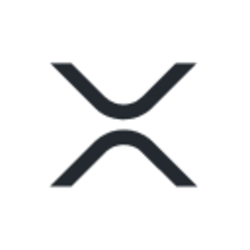- Ripple is set to launch a stablecoin on the XRP Ledger and Ethereum by the end of the year, aiming to link traditional financial systems with the cryptocurrency industry.
- The United States Securities and Exchange Commission (SEC) classified the new product as an “unregistered crypto asset,” continuing its long-standing legal contention with Ripple.
- Ripple’s initiative has been met with both anticipation from the crypto community and resistance from regulatory bodies, highlighting the ongoing clash between innovation and regulation.
Ripple’s Upcoming Stablecoin: Bridging Traditional Finance and Cryptocurrency
Ripple Announces New Stablecoin RLUSD
Ripple has announced plans to launch a stablecoin, named Ripple USD (RLUSD), pegged to the US dollar on the XRP Ledger and Ethereum by the end of the year. Brad Garlinghouse, Ripple’s CEO, stated that the new financial product aims to bridge traditional finance and cryptocurrency.
Anticipation and Market Impact
The announcement has created a buzz in the crypto community. Influencers like Alex Cobb believe RLUSD could significantly influence Ripple’s native token, XRP, potentially igniting a substantial price rally. However, regulators have already started to scrutinize the new product.
SEC’s Reaction to RLUSD
Even before its official launch, RLUSD has drawn criticism from the United States Securities and Exchange Commission (SEC). The SEC has labeled the stablecoin an “unregistered crypto asset,” continuing its legal battle with Ripple.
The SEC’s litigation against Ripple, which began in December 2020, accused the company of raising over $1.3 billion through the sale of XRP as an unregistered security. This legal dispute moved to trial in April and experienced numerous developments, including three partial court wins for Ripple in 2023, spurring a notable resurgence in XRP’s price.
Ripple’s Broader Strategic Goals
Beyond the launch of RLUSD, Ripple CEO Garlinghouse has other strategic priorities for the next three years, emphasizing international expansion. Despite regulatory challenges in the U.S., Ripple has seen robust growth in non-US markets.
“We are going to keep expanding even though the US market, partly from a regulatory point of view, has been slow to adopt. The non-US market has been really, really strong for us.”
Garlinghouse also reinforced Ripple’s vision to be a key player in the future of financial infrastructure, with XRP playing a significant role:
“We think that opportunity is huge, we think that’s going to be great for Ripple, we think it’s going to be great for XRP so I’m very very optimistic about that. I just think that the US needs to figure it out.”
Conclusion
Ripple’s upcoming stablecoin launch aims to intertwine traditional financial systems with the crypto universe, reflecting its broader vision for future financial infrastructure. While the project has generated significant enthusiasm within the crypto community, the regulatory framework remains a formidable challenge. The unfolding events between Ripple and the SEC will likely be pivotal in determining the course of this ambitious endeavor.
